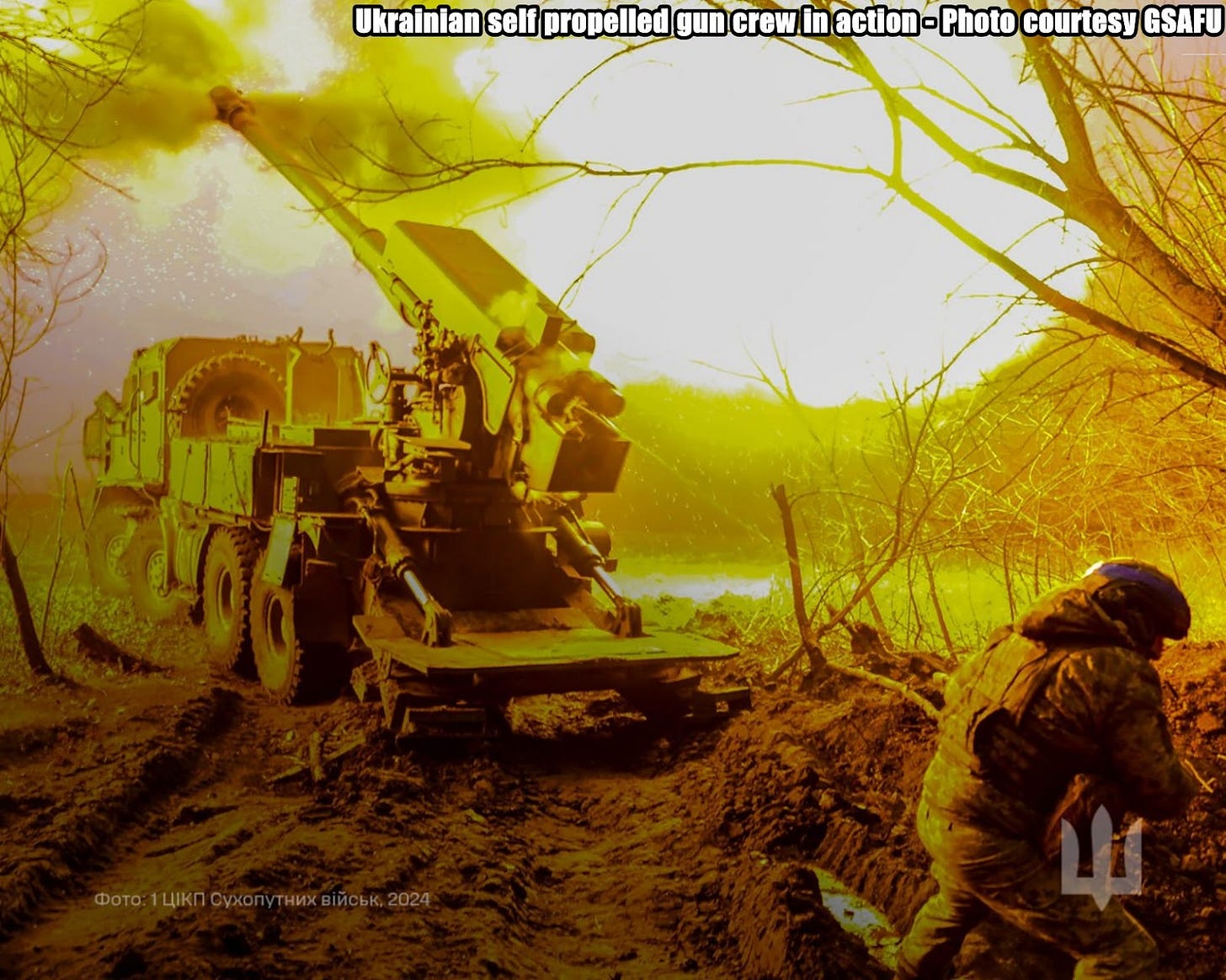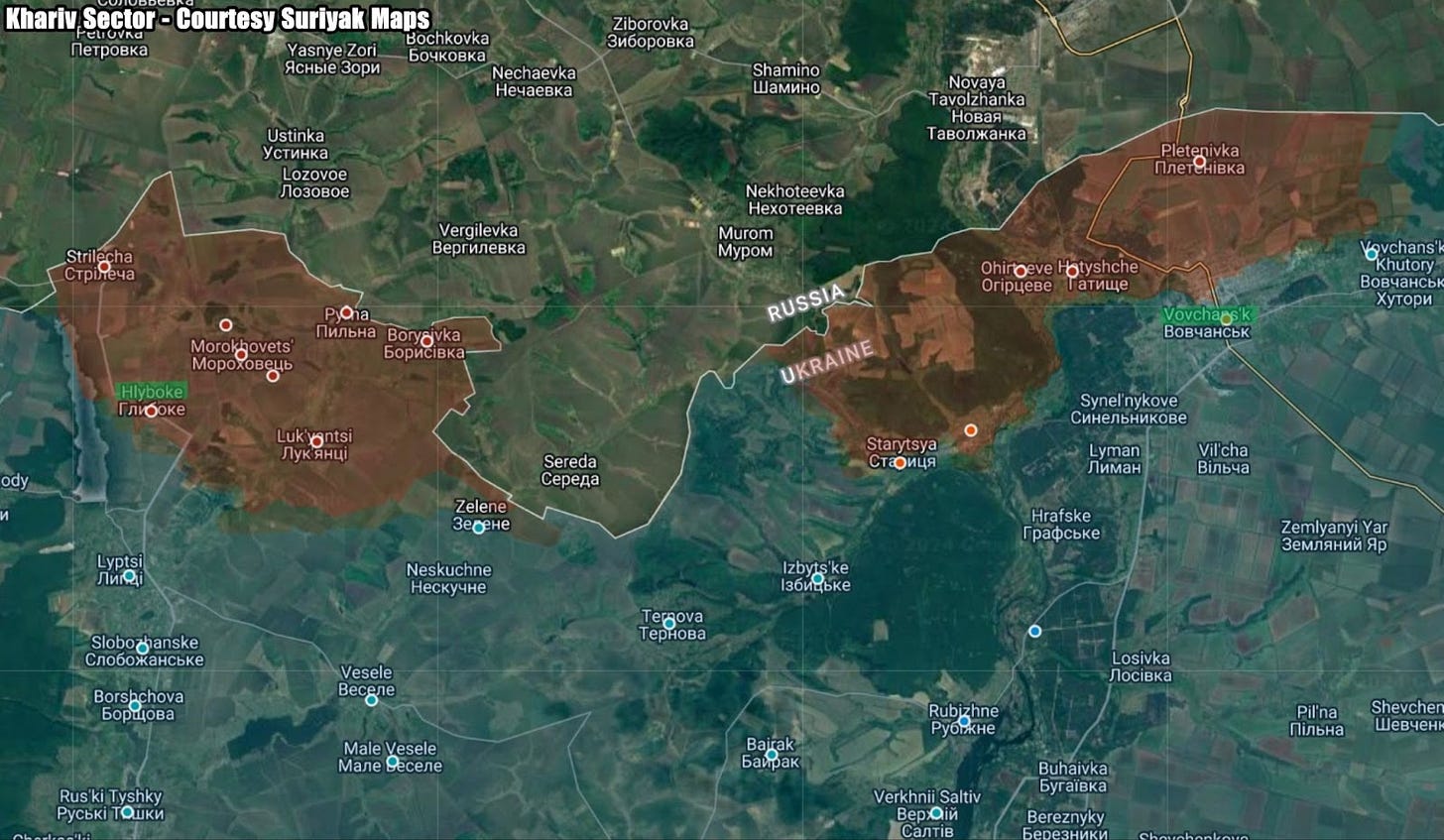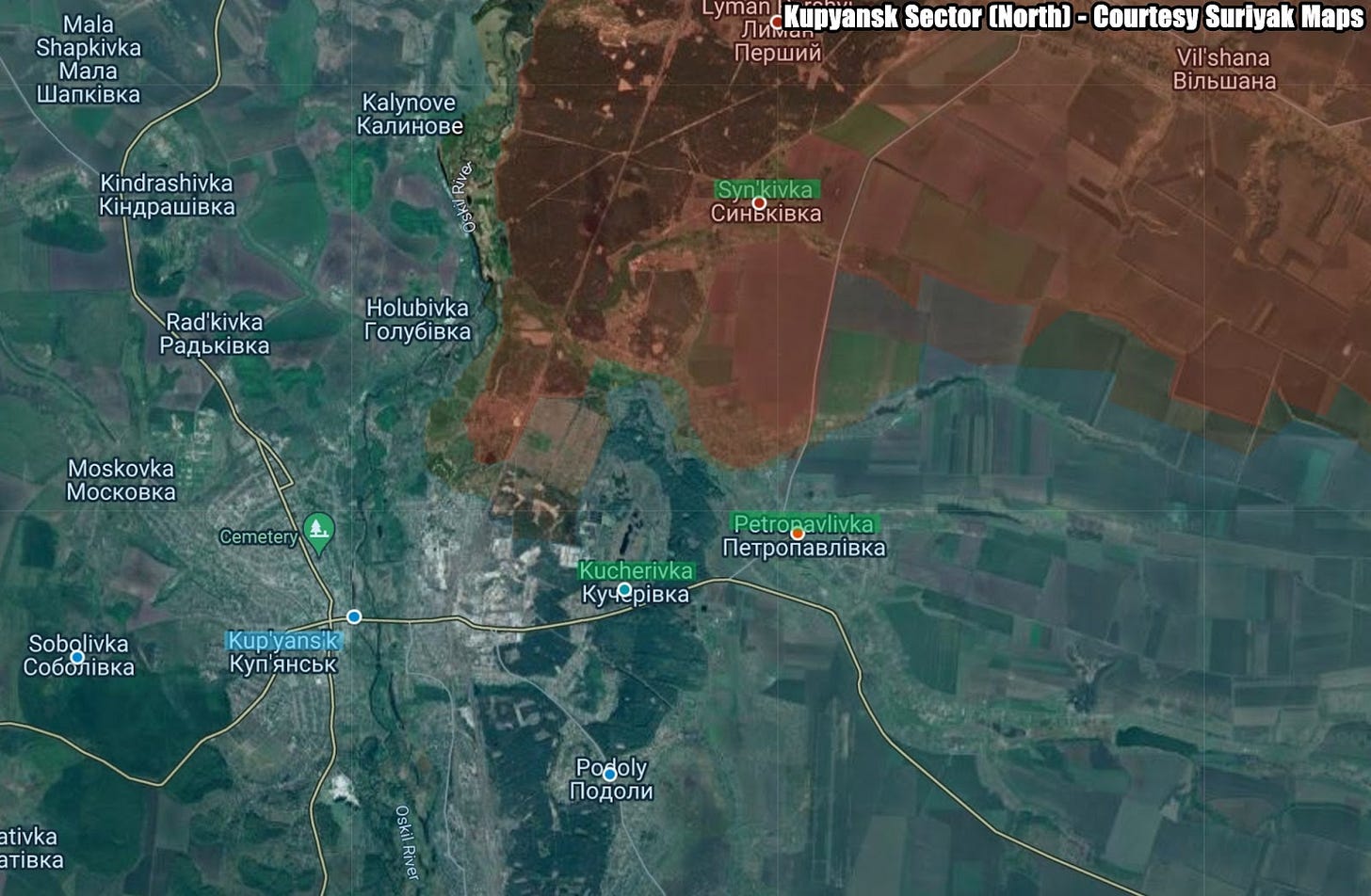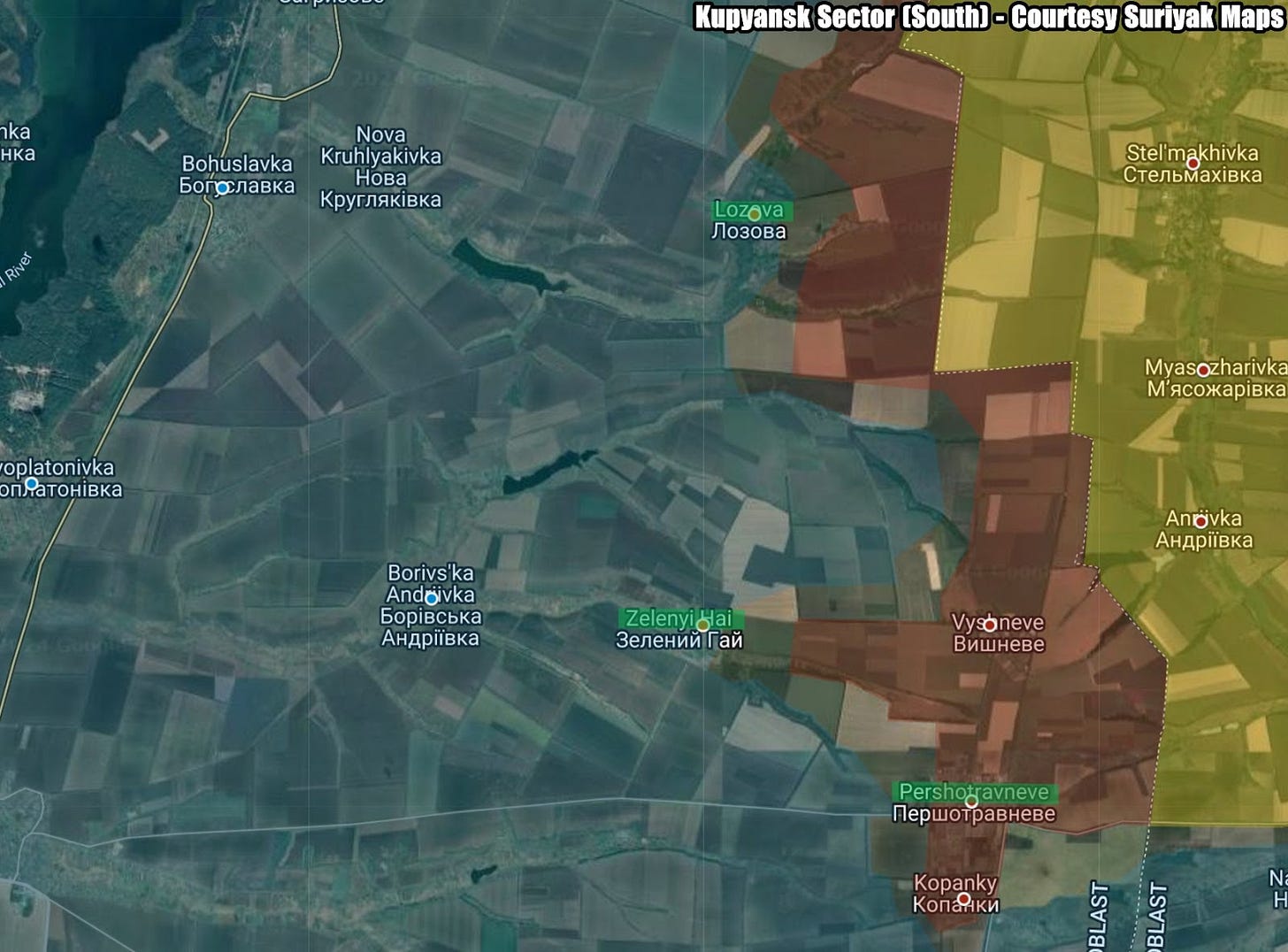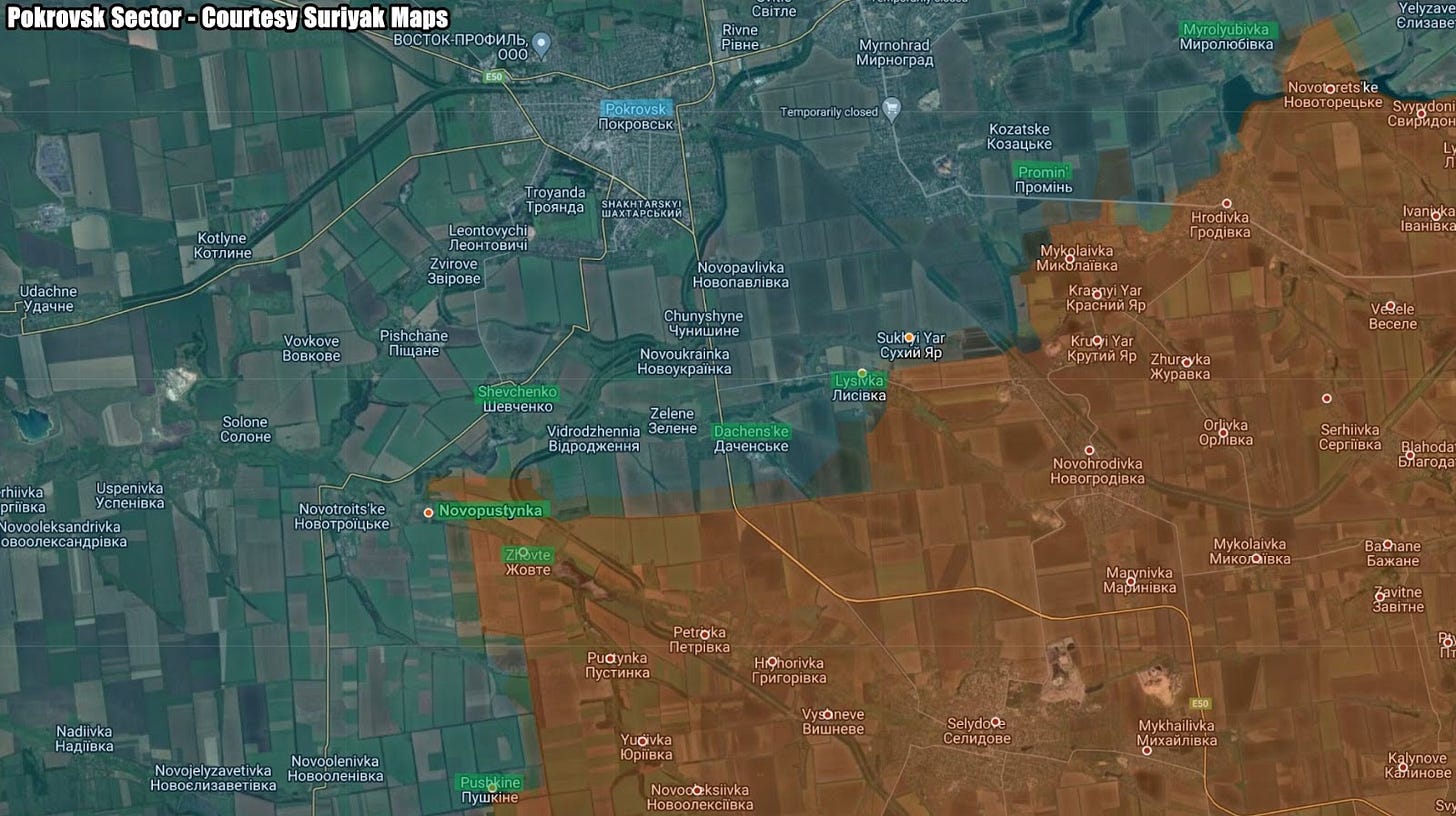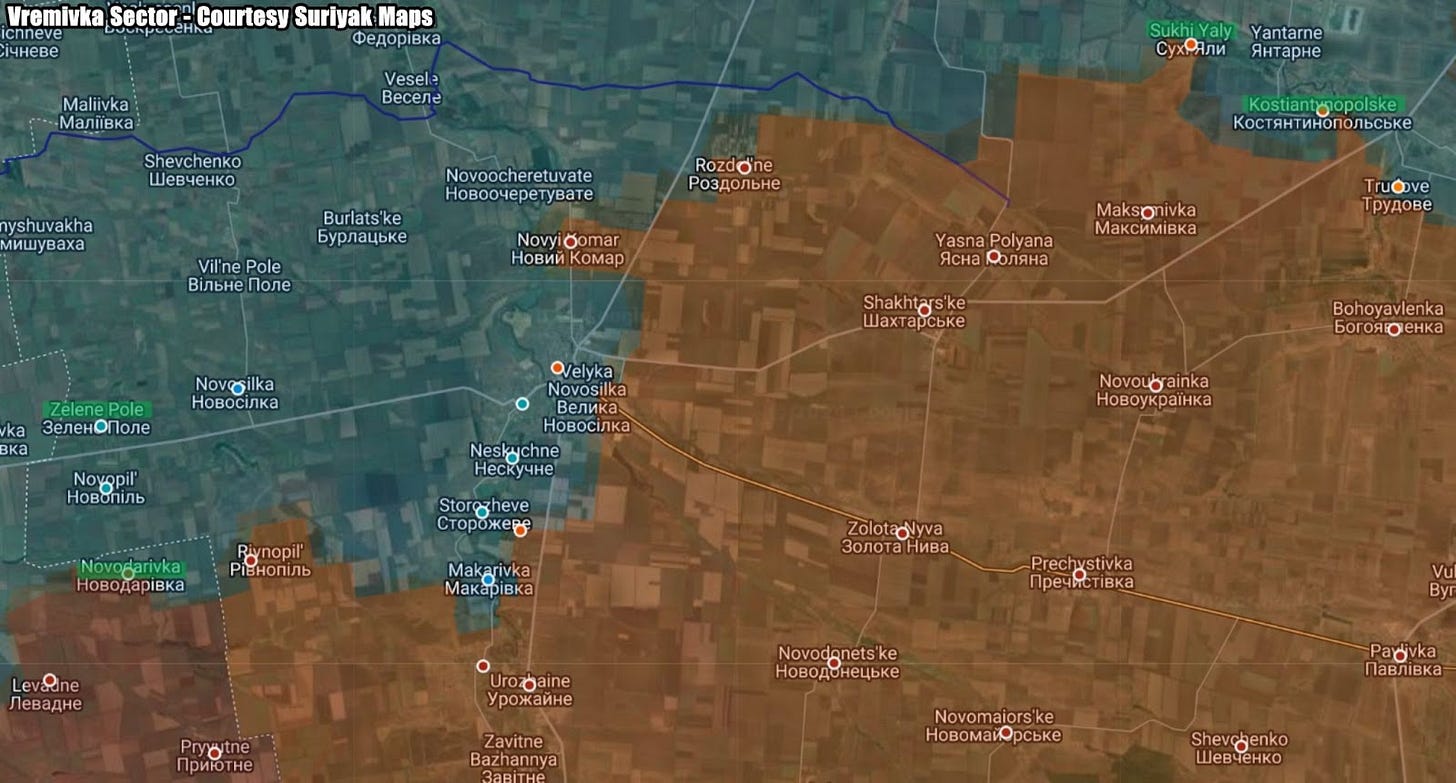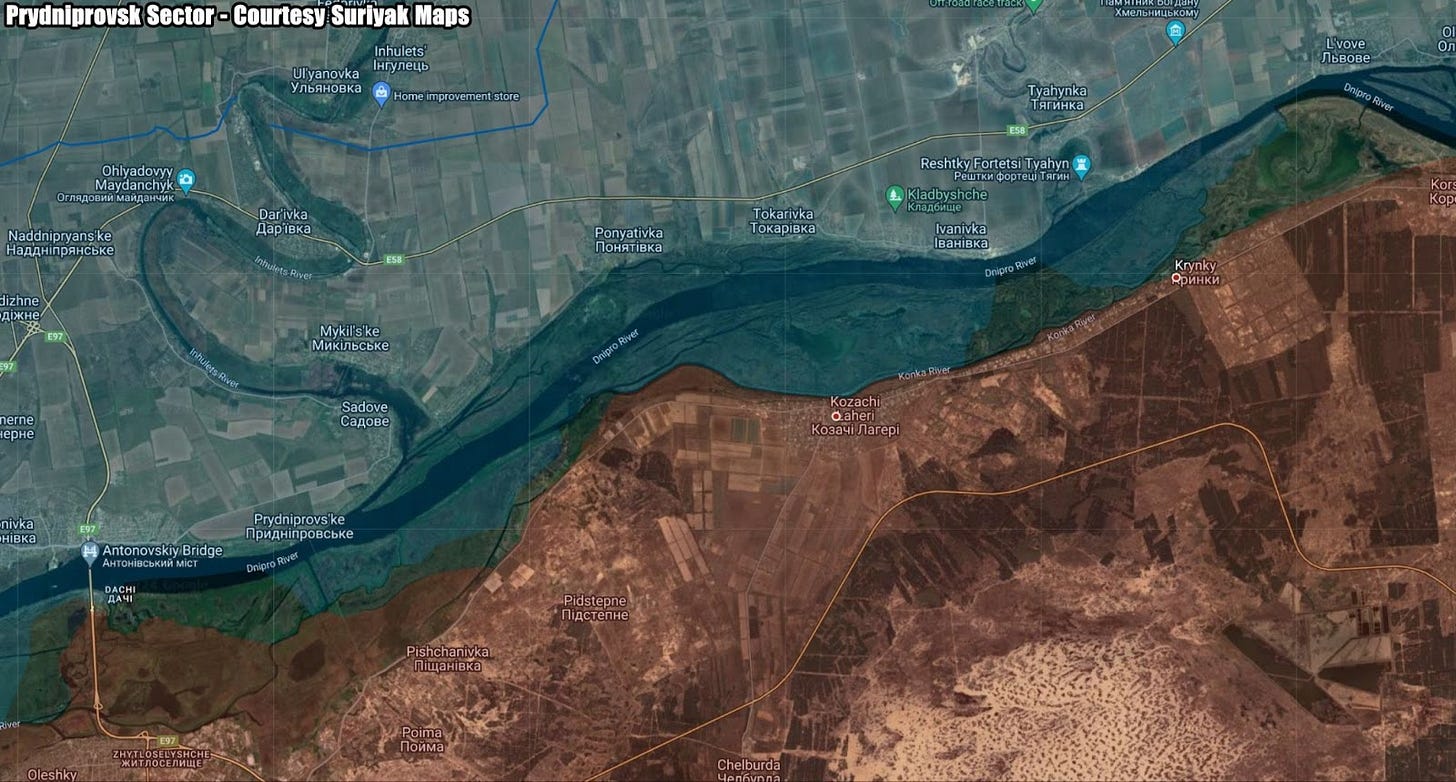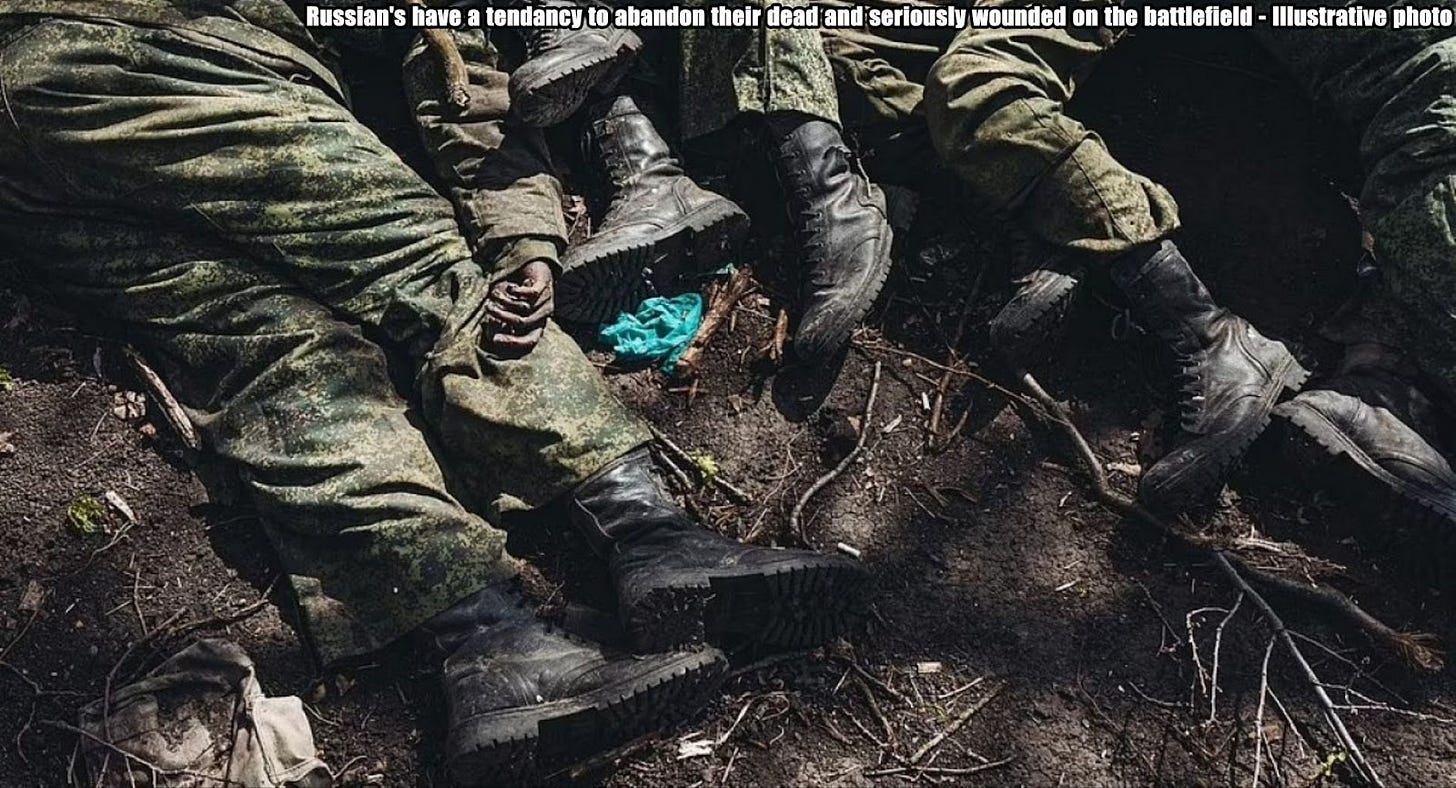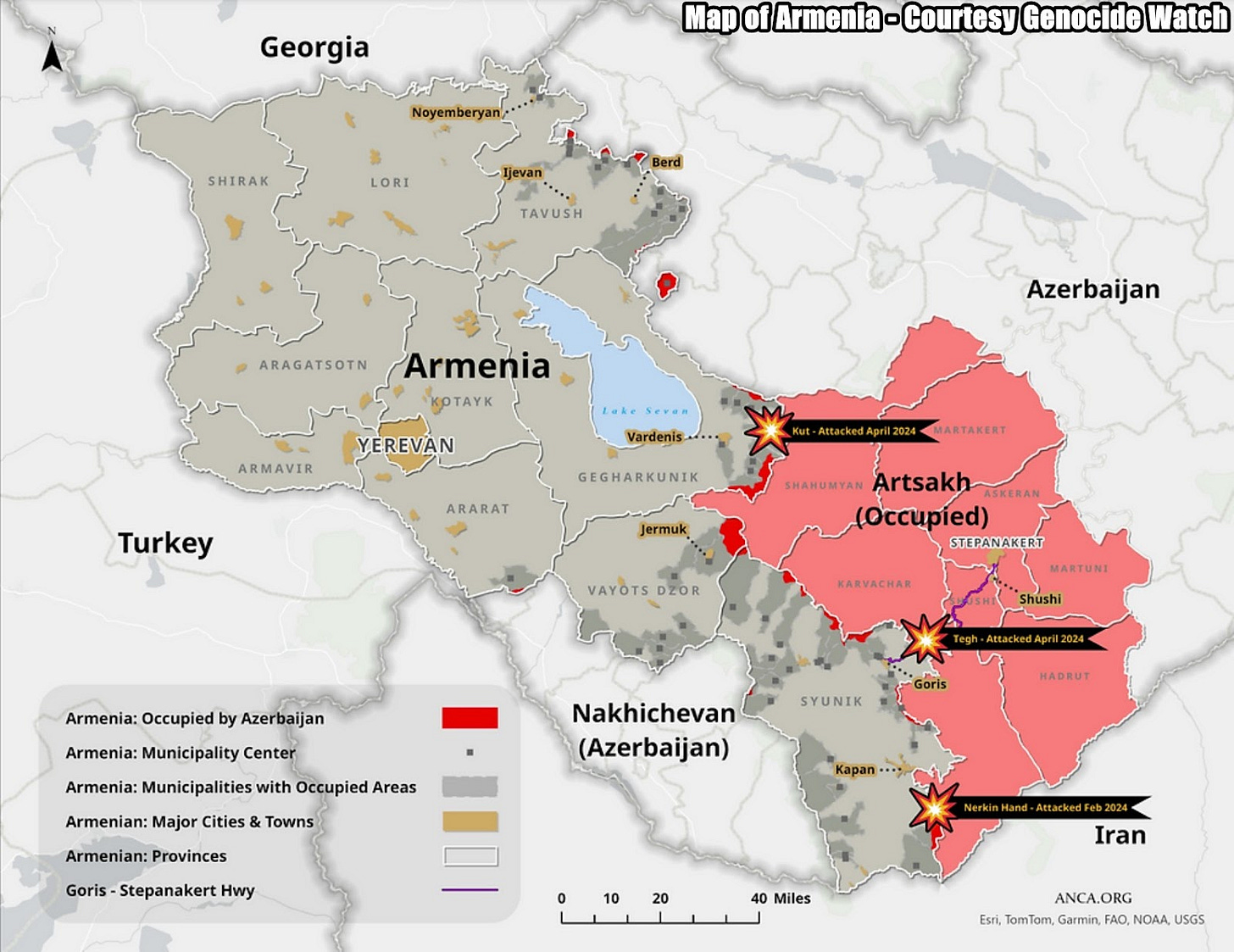Slava Ukraini! In early 2022 I began a Telegram channel aggregating news from a number of sources daily on the war in Ukraine. In June 2023 I began providing a daily draft for the Ukraine War Brief Podcast collecting news from over 70 sources daily, which formed the basis of the script. While the Podcast no longer exists I have continued to make this Brief available for my followers here on Substack for those who wish to keep up with the news from the war. A version of this Brief will also be made available on The People’s Media Substack for those who should choose to subscribe there.
All the latest news on the Russo-Ukraine War 6 days per week
ALONG THE CONTACT LINE
GSAFU Morning Report
The General Staff of the Armed Forces of Ukraine in its Operational Information update at 22:00 on Dec 4 stated that day 1016 of the full-scale invasion of the Russian Federation against Ukraine was about to begin.
During the past day, 156 combat engagements took place. Over the past 24 hours, the enemy carried out 25 air strikes, 654 drone strikes and almost 4,000 artillery strikes across the positions of Ukrainian forces.
At the same time, Ukrainian soldiers continue to inflict losses in manpower and equipment on the occupying troops, exhausting the enemy along the entire front line and continue to disrupt the plans of Russian occupiers to advance deeper into the territory of Ukraine.
Today Ukrainian’s celebrate their missile forces and artillery gunners, the finest in the world. They work tirelessly to blunt the assaults of invading Russians and defend the nation.
Air Force Daily Report
On the night of December 5, 2024 (from 20:00 on December 4), the enemy attacked Dnipropetrovsk Oblast with two Iskander-M ballistic missiles from the Rostov region, and also attacked Ukraine with 44 Shahed type UAVs and other types of UAVs (launch areas : Orel, Kursk - Russian Federation).
As of 08:30, units of anti-aircraft missile forces, EW and mobile fire groups of the Air Force and Defense Forces of Ukraine shot down 30 enemy UAVs in Kyiv, Kharkiv, Poltava, Sumy, Chernihiv, Cherkasy, Kirovohrad, Zhytomyr, Vinnytsia, Khmelnytsky and Odesa regions.
12 drones were lost in location, 1 — left the controlled airspace in the direction of Belarus.
The Russian Border Incursion
The Institute for the Study of War (ISW), a US based think tank, in its Dec 4 Russian Offensive Campaign Assessment reported that Russian forces recently advanced in Ukraine's main salient in Kursk Oblast amid continued fighting in the area on Dec 4. Geolocated footage published on Dec 4 indicates that Russian forces recently advanced in southern Darino (southeast of Korenevo).
A Russian milblogger claimed that Russian forces advanced into forested areas near Malaya Loknya (north of Sudzha) and are clearing the the area, but ISW has not observed confirmation of this claim. Russian milbloggers claimed that Ukrainian forces counterattacked near Nikolayevo-Darino, Darino, and Novoivanovka (all southeast of Korenevo). Russian forces continued assaults near Darino and northeast of Sudzha near Martynovka. Reconnaissance elements of the Russian 51st Airborne (VDV) Regiment (106th VDV Division) and drone operators of the Russian 83rd VDV Brigade are reportedly operating in Kursk Oblast.
The Khortytsia operational-strategic group
(Responsible for the northeastern part of Ukraine. )
Kharkiv Sector: Over the last day Ukrainian Defense Forces repelled 5 Russian attacks in the area of Hlyboke and Vovchansk. 1 engagement is ongoing
Kupyansk Sector: Russian Forces carried out 15 offensive actions against Ukrainian defensive positions near Synkivka, Petropavlivka, Kucherivka, Lozova, Zelenyi Hai and Pershotravneve.
-
Lyman Sector: Russian Forces carried out 8 offensive actions against Ukrainian defensive positions near Druzhelyubivka, Hrekivka, Terny, Torske and Zarichne.
Siversk Sector: In this sector, over the last day, there has been no significant change in the combat environment.
Kramatorsk Sector: In this sector, over the last day, there has been no significant change in the combat environment.
Toretsk Sector: Over the last day Russian forces carried out 4 offensive actions with air support in the area of Toretsk. 2 engagements are ongoing.
The Tavria operational-strategic group
(Responsible for the central-eastern and southeastern part of Ukraine.)
Pokrovsk Sector : Over the last day in this sector, Russian Forces carried out 39 offensive actions against Ukrainian defensive positions in the vicinity of Myrolyubivka, Promin,, Lysivka, Dachenske, Shevchenko, Novopustynka, Zhovte and Pushkine. 3 engagements are ongoing.
Kurakhove Sector: Russia conducted 38 offensive actions in the vicinity of Novodmytrivka, Zorya, Sontsivka, Berestky, Kurakhove, Dachne, Dalnje, Uspenivka, Romanivka and Yelyzavetivka. 7 engagements are ongoing.
Vremivka Sector: Russian forces made 10 attempts to break through Ukrainian defences in the vicinity of Novopil, Novodarivka, Zelene Pole, Sukhi Yaly, and Kostiantynopolske. 2 engagements are ongoing.
Orikhiv Sector: In this sector, over the last day, there has been no significant change in the combat environment.
The Odesa operational-strategic group
(Responsible for Kherson, Qırım, (also known as Crimea) and the Black Sea.)
Prydniprovsk Sector: In this sector, over the last day, there has been no significant change in the combat environment. Russian forces made 2 unsuccessful attempts to dislodge Ukrainian units from their positions.
TEMPORARILY OCCUPIED TERRITORIES
Nothing major to report.
THE HOME FRONT
Russian attacks across Ukraine kill 4, injure 16 over past day
Russian attacks over the past day killed at least four people and injured 16 others across Ukraine, The Kyiv Independent reports citing regional authorities on Dec. 5.
Ukraine’s Air Force intercepted 30 of 44 Russian drones launched overnight. Russia also fired two Iskander-M ballistic missiles during the assault, the Air Force reported.
In Kharkiv Oblast, a Russian strike hit a residential area, killing a 40-year-old man. His mother and another woman suffered acute stress reactions. In Kupiansk, a drone strike wounded a 65-year-old man, who was hospitalized, Kharkiv Oblast Governor Oleh Syniehubov said.
In Dnipropetrovsk Oblast, Russian attacks killed an 88-year-old woman and injured a 64-year-old man. According to the Office of the Prosecutor General, the attack also damaged private homes and vehicles.
In Donetsk Oblast, Russian forces wounded four residents—three in Kostiantynivka and one in Shevchenkove, Governor Vadym Filashkin said.
Russian attacks against Kherson Oblast killed two people and injured 10 over the past day, Governor Oleksandr Prokudin reported.
Ukraine’s Air Force and Defense Forces intercepted drones targeting Kyiv, Kharkiv, Poltava, Sumy, Chernihiv, Cherkasy, Kirovohrad, Zhytomyr, Vinnytsia, Khmelnytskyi, and Odesa oblasts, where no casualties were reported.
RUSSIAN WORLD
Russia Is Touting Itself as a Haven for 'Conservative' Westerners.
Maria Butina was once imprisoned in the United States for acting as an unregistered foreign agent by infiltrating conservative circles during the 2016 U.S. presidential election. The Moscow Times reports.
[Butina was convicted for her work to infiltrate conservative groups like the National Rifle Association as part of an effort to promote Russian interests in the 2016 U.S. presidential election. The Senate Intelligence Committee concluded that she sought to persuade Donald Trump's campaign to establish a secret communications back channel with Russia. Butina has denied being a spy.]
Now a lawmaker in Russia’s lower-house State Duma, she is rebranding herself as a guide and mentor for Westerners who, the Kremlin claims, are seeking to move to Russia in search of a haven for their conservative beliefs.
Welcome to Russia, a new NGO led by Butina, will oversee the immigration process for the “thousands” of Westerners seeking a more “traditional” way of life in Russia, she told The Moscow Times.
“The group will provide three types of services. For those who want to relocate, it will offer the necessary information according to the decree of 'spiritual' asylum,” Butina said ahead of a press conference in Moscow on Friday with a group of Russian lawmakers and Western migrants now living in the country.
“It will provide tours for those who are looking to move to Russia in the future who want to see how the country is to live [in], and finally, we also want to create a community [of those that have moved to Russia],” she said.
In April, President Vladimir Putin signed a decree that simplified the Russian residency process for Western nationals who share what the Kremlin calls “traditional Russian spiritual and moral values.”
“This means people who don't support LGBT movements, people who believe their kids should be raised in a traditional way,” Butina said in a phone interview about Putin’s decree. “This is the decree that helps families to preserve the idea of a mother and a father, something that they are not given in the West. Conservatives are welcome in Russia, that is the point.”
Since the beginning of the full-scale invasion of Ukraine nearly three years ago, the Kremlin has ramped up its efforts to embrace — and enforce — conservative values, positioning itself as a counterweight to the so-called “destructive neoliberal agenda” of its Western adversaries.
Last November, the Supreme Court designated the vaguely defined “international LGBT movement” as an “extremist” organization, putting any individual or group who publicly identifies with LGBTQ+ symbols or lifestyles at risk of criminal prosecution.
According to statistics from Butina's office, 4,676 Westerners have sought temporary asylum in Russia since the beginning of 2022, with 2,358 people applying for a temporary residence permit in 2023. Over 200 of them signed up and moved to Russia since April's decree, Butina said.
The bulk come from Germany and the Baltic states, with 1,237 and 1,802 nationals immigrating from these places respectively, while 227 are U.S. citizens and 108 are British nationals, according to Butina's statistics.
48,000 Russian soldiers may be MIA in Ukraine
Russian Deputy Defense Minister Anna Tsivilyova let slip on Nov. 26 that the ministry had received 48,000 applications for DNA tests from relatives seeking information about soldiers missing in action during the war against Ukraine, opposition Telegram news channel Astra reported on Dec. 3.
At a roundtable in the Russian State Duma, Tsivilyova – Russian President Vladimir Putin's cousin once removed – revealed that relatives' DNA had been collected and stored in a database. Her comments provide rare insight into the number of missing Russian troops, as no official statistics on these figures have been released.
Andrei Kartapolov, head of the State Duma's defense committee, responded by cautioning against publicly discussing such numbers. "This is sensitive information. When we finalize the documents, we should ensure these figures do not appear publicly," Kartapolov said.
Tsivilyova clarified that the figure she cited referred to the number of relatives' appeals, not confirmed missing soldiers. "Many of them will be found. Therefore, this figure reflects appeals, not statistics," she added.
According to the General Staff of Ukraine’s Armed Forces, Russia has lost 748,950 troops since launching its full-scale invasion of Ukraine on Feb. 24, 2022.
Grumpy Here - from the start of this war Russian commanders have had a tendency to under report casualties, both because of the Russian culture of always lying to their superiors and so that can continue to receive compensation for them in their budgets.
INTERNATIONAL NEWS
Armenia reaches “point of no return” with Russian led CSTO
The Institute for the Study of War (ISW), a US based think tank, in its Dec 4 Russian Offensive Campaign Assessment reported that Armenian Prime Minister Nikol Pashinyan announced on Dec 4 that Armenia has effectively reached "the point of no return" in its ties with the Russian-led Collective Security Treaty Organization (CSTO). Pashinyan criticized CSTO allies for failing to respond to Azerbaijan's encroachment on Armenia's internationally recognized territory in 2021 and 2022 - likely referring to encroachments into Syunik and Gegharkunik provinces - despite prior assurances that any violation of Armenia's territorial integrity was a "red line" for the CSTO.
Pashinyan stated that the CSTO lacks credibility because it does not have a clearly defined zone of responsibility in Armenia — despite Armenia still formally being a member state - and emphasized that Armenia's issues with the CSTO are not necessarily related to the Nagorno-Karabakh conflict.
Pashinyan indicated that Armenia no longer participates in CSTO activities or policymaking. ISW continues to observe souring Armenian-Russian bilateral relations and assesses that a formal Armenian withdrawal from the CSTO would serve as another blow to Russian power projection across the countries that the Soviet Union once colonized.
Russian accused of war crimes in Ukraine goes on trial in Finland
A Russian man went on trial in Finland on Thursday on charges of committing war crimes while commanding a far-right paramilitary unit in eastern Ukraine a decade ago. Reuters reports.
The trial of Yan Petrovsky is a rare attempt by prosecutors outside Ukraine to seek justice for victims of alleged war crimes in a conflict that began long before Russia's invasion of Ukraine in February 2022.
On the first day of hearings at Helsinki district court, the Finnish prosecutor demanded life imprisonment for Petrovsky, who is also known as Voislav Torden.
Petrovsky, who was born in 1987, faces five charges of committing war crimes in eastern Ukraine in 2014 and 2015, court documents seen by Reuters show.
Petrovsky, who has been under European Union and U.S. sanctions since 2022, denies all the charges, his lawyer Heikki Lampela told the court.
Petrovsky was detained in Finland at Ukraine's request in 2023 as he tried to travel to France under a false identity. Finland's supreme court later blocked his extradition to Ukraine.
The charges against Petrovsky relate to his activities in Rusich, a paramilitary subunit affiliated to the Wagner mercenary group that fought against Ukraine on the side of Russia-backed separatists in the Luhansk region of eastern Ukraine in 2014, the prosecutor's office said in a statement.
Deputy Prosecutor General Jukka Rappe accuses Petrovsky of co-commanding a group of Rusich fighters who ambushed a group of Ukrainian soldiers after deceiving them by raising a Ukrainian flag at a road block on Sept. 5, 2014, killing 22 and seriously wounding four.
Rappe argues that the deception involved in the ambush and allegations that wounded soldiers were executed, that one was mutilated and that the degradation of a body was shown in photographs and video footage constitute war crimes under the Rome Statute and the Geneva Conventions.
In an interview with Finnish newspaper Helsingin Sanomat before the trial, a plaintiff who is the father of the soldier whom Petrovsky's unit is accused of mutilating, called for justice for his son.
Rusich's symbol was slashed on the cheek of the plaintiff's son while he was still alive, according to the charges.
"Evil must be punished. I want this spread of evil to be stopped," Vasil Isyk, the dead man's father, told the daily.
Hearings in the case are slated to continue until the end of January, with witnesses and plaintiffs in Ukraine to be heard remotely, the court documents show.
EU prepared to step in if Trump withdraws from $50 billion Ukraine loan
Polish Deputy Finance Minister Pawel Karbownik said on Dec. 4 that the European Union is prepared to compensate if the U.S. withdraws from the G7's $50 billion multilateral loan agreement for Ukraine. The Kyiv Independent reports.
The loan, agreed upon by G7 countries in October, is designed to be repaid using interest from over $300 billion in frozen Russian assets under Western control.
"There is a risk that Donald Trump will pull out of the $50 billion agreement," Karbownik warned during an event marking Poland's upcoming presidency of the EU Council, Politico reported.
Under the agreement, the EU and the U.S. were to contribute $20 billion each, with the United Kingdom, Canada, and Japan funding the remainder.
Faced with the possibility of the U.S. withdrawal, Brussels signed an agreement with Kyiv to raise its potential contribution to up to 35 billion euros. The final sum provided by the EU will depend on the scale of the U.S.'s involvement.
Concerns have grown as U.S. House Speaker Mike Johnson, a Republican and Trump ally, has resisted putting a $24 billion Ukraine aid package to a vote. Johnson previously delayed aid to Kyiv last fall by stalling a $61 billion foreign assistance bill, though he ultimately negotiated its passage.
As the Biden administration accelerates aid deliveries before Trump assumes office in January, uncertainty over U.S. support for Ukraine looms. Outgoing U.S. Secretary of State Antony Blinken said that Ukraine should receive the loan from the U.S. and the EU within the coming weeks.
Trump has criticized military assistance for Ukraine and said he aims to push for negotiations between Kyiv and Moscow, potentially requiring Ukraine to cede territory and temporarily abandon its NATO aspirations.
Oreshnik strike planned before long-range strikes permission, Gerasimov reportedly told US military chief
Russian General Valery Gerasimov, the chief of the General Staff of the Russian army, held a rare phone call with U.S. General Charles Q. Brown Jr., the chairman of the Joint Chiefs of Staff, on Nov. 27, The Kyiv Independent reported citing the New York Times on Dec. 4.
The conversation occurred just six days after Russia launched a new intermediate-range ballistic missile, the Oreshnik, at Dnipro in Ukraine. Russian President Vladimir Putin claimed the strike was in response to Ukraine's use of American and British weapons to target deeper within Russia.
During the call, Gerasimov told Brown that the missile launch had been planned well before the U.S. authorized Ukraine to use ATACMS missiles for deeper strikes into Russian territory, undisclosed official sources told the New York Times.
Captain Jereal Dorsey, a spokesperson for Brown, confirmed the call, noting that it was conducted at Gerasimov's request and that Brown agreed not to announce it proactively.
The Nov. 21 Oreshnik missile strike on Dnipro prompted a media blitz in Russia. The Moscow Times on Dec. 3 described it as a carefully staged effort to intimidate Western allies.
Four Russian official sources reportedly indicated that the strike was primarily meant to display strength rather than escalation.
This undermines Putin's subsequent threats to use the Oreshnik missile to target "decision-making centers" in Kyiv, which appear increasingly aimed at sowing fear rather than signaling imminent action.
MILITARY & TECH
Ukraine looks at the possibility of turning old Soviet era Mig 21’s into cruise missiles of decoys
Croatia is decommissioning its MiG-21 fighter jets in favor of the French Rafale, which presents an opportunity for the retired aircraft to be repurposed in a useful way rather than scrapped.
In the context of Ukraine’s war with Russia, one possible application is converting these MiG-21s into remotely controlled target drones or even ersatz cruise missiles. However, such a venture involves several considerations that need to be carefully evaluated.
Historically, the Soviet Union developed a process to convert MiG-21s into remotely controlled targets, designated as M21m.
For this transformation, all valuable onboard equipment was removed — about one ton, including the radar and antennas — and replaced with remote control systems. As a result, the MiG-21 could take off, maneuver autonomously.
The MiG-21 itself has notable specifications: a fuselage length of 14.1 meters, a wingspan of 7.15 meters, a maximum speed of 1,300 km/h at low altitudes or 2,230 km/h at higher altitudes, and an operational range of 1,470 kilometers with additional fuel tanks. It can carry a payload of up to 1,300 kilograms.
With the removal of unnecessary equipment, the aircraft’s weight is greatly reduced, turning it into a long-range, high-speed attack UAV.
The psychological impact of using converted MiG-21s as kamikaze drones against russian military bases could be significant. However, this is where all the downsides begin.
First, Ukraine would need to negotiate with Croatia — or even Romania, which decommissioned its MiG-21 fleet in May 2023 — for access to these aircraft. Even if obtained, the resources required to convert them into attack UAVs could be considerable, potentially outweighing the benefits when compared to producing more conventional drones.
Another concern is accuracy. Converting a fighter jet into a cruise missile might result in limited precision, reducing its effectiveness in combat. Thus, while the idea of repurposing MiG-21s is intriguing and potentially valuable, the practical challenges — logistical, financial, and technical — necessitate a thorough evaluation of the pros and cons before committing to such a project.
That’s it for today’s Brief folks if you would like to keep up with events in Ukraine daily please consider subscribing.
Feel free to share this update with your friends. Heroyam Slava!








